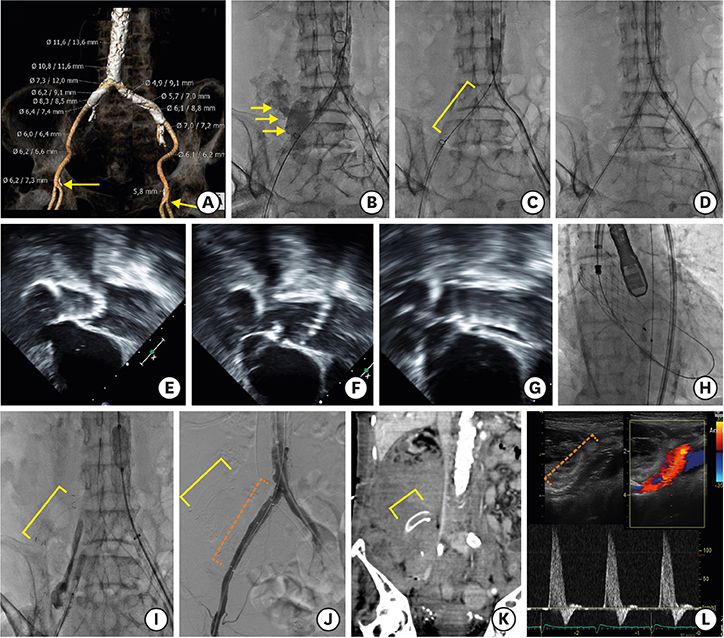Korean Circ J.
2019 Mar;49(3):280-281. 10.4070/kcj.2018.0266.
Iliac Artery Rupture and Retroperitoneal Migration of a Stent Graft during Transcatheter Aortic Valve Replacement
- Affiliations
-
- 1Division of Cardiology, Severance Cardiovascular Hospital, Yonsei University College of Medicine, Seoul, Korea. cysprs@yuhs.ac
- KMID: 2438540
- DOI: http://doi.org/10.4070/kcj.2018.0266
Abstract
- No abstract available.
MeSH Terms
Figure
- Full Text Links
- Actions
-
Cited
- CITED
-
- Close
- Share
- Similar articles
-
- Expanding transcatheter aortic valve replacement into uncharted indications
- Transcatheter Aortic Valve Implantation by Transfemoral Approach in a Patient with Bilateral Iliac Artery Disease
- Successful Endovascular Management of Intraoperative Graft Limb Occlusion and Iliac Artery Rupture Occurred during Endovascular Abdominal Aortic Aneurysm Repair
- Endovascular Therapy for Abdominal Aortic Aneurysm and Iliac Artery Aneurysm Using SEAL Aortic Stent-Graft: A Single Center Experience
- Successful Transcatheter Aortic Valve Replacement for Severe Aortic Regurgitation after CARVAR Operation


